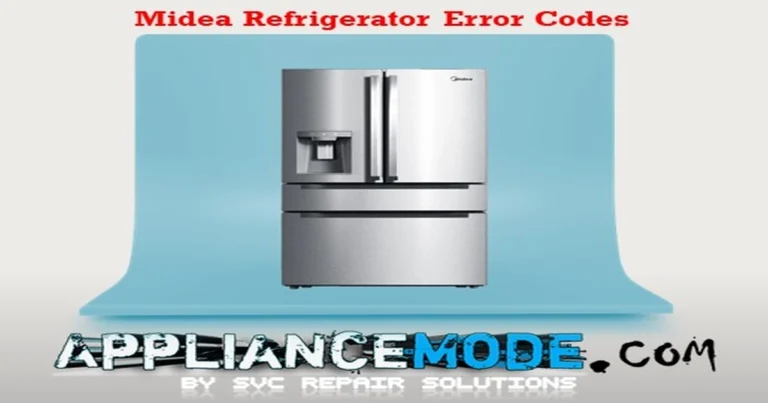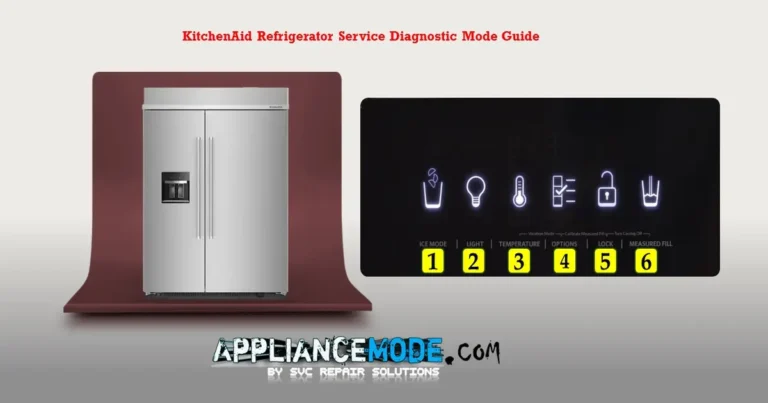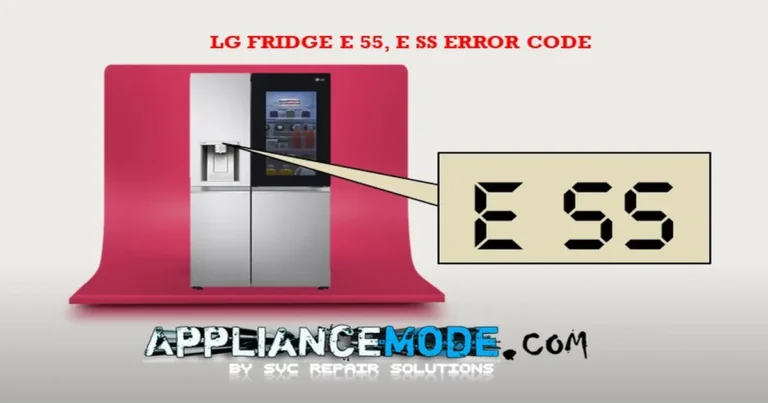Test a Refrigerator Compressor
This guide will show you how to test a refrigerator compressor. We’ll cover how to check the compressor itself using an ohmmeter and what to do if it’s not running even after passing the electrical test.
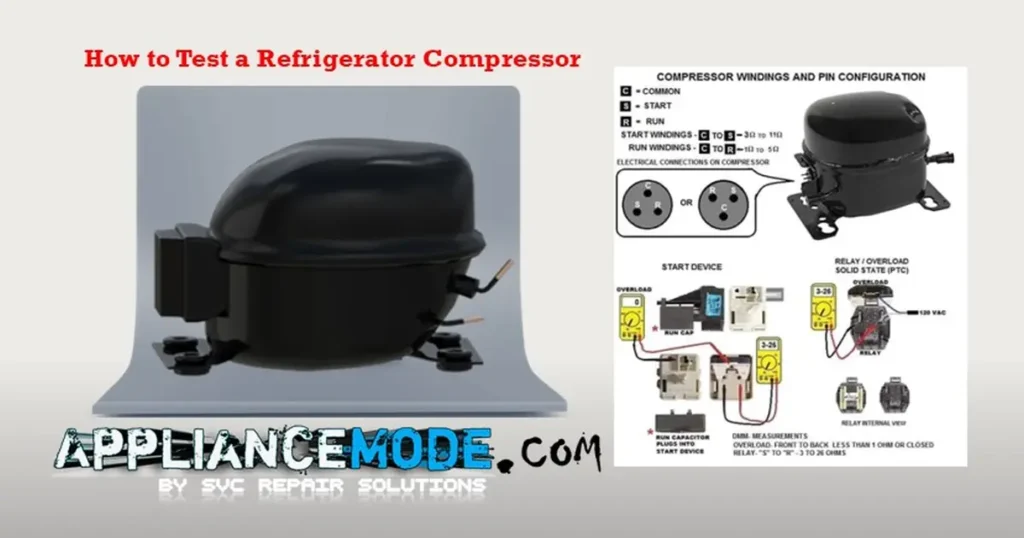
How to Test a Refrigerator Compressor: Understanding Compressor Types
Most refrigerators (especially older models) use standard AC compressors with a relay and capacitor attached. Newer refrigerators may use variable-speed compressors. These are easily identified by a much larger control box attached to the compressor, significantly larger than the typical relay/capacitor setup. This guide focuses on testing standard compressors.
Testing the Compressor with an Ohmmeter
You’ll need a multimeter set to ohms (Ω) to perform this test. The compressor has three terminals, forming a triangular pattern. Here’s how to test them:
- Bottom Two Terminals: Place the multimeter probes on the two bottom terminals. You should get a reading of approximately 10 ohms.
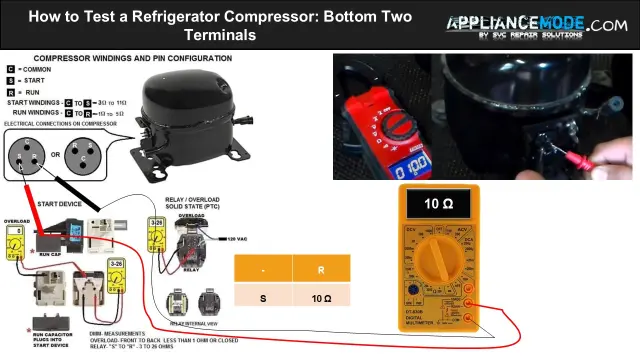
- Top to Bottom Left: Place one probe on the top terminal and the other on the bottom left terminal. You should get a reading of around 6 ohms.
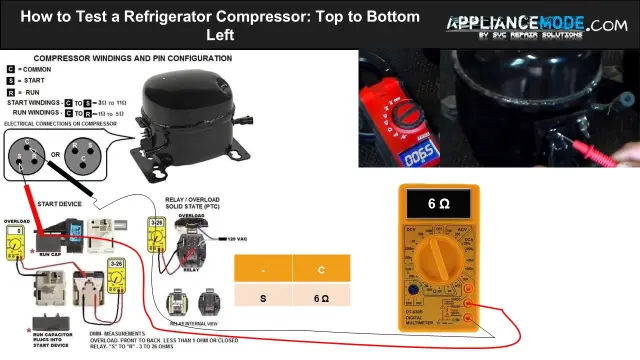
- Top to Bottom Right: Place one probe on the top terminal and the other on the bottom right terminal. You should get a reading of around 4 ohms.
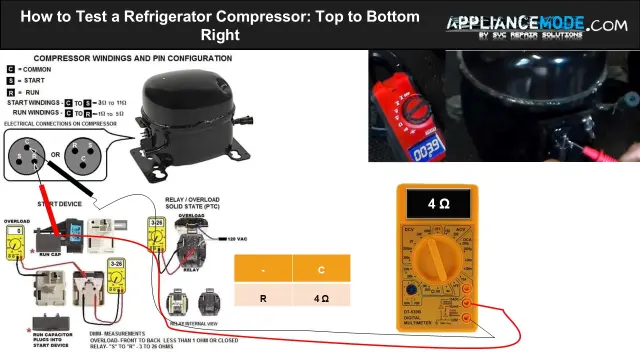
Interpreting the Results:
- Expected Readings: If you get readings close to 10, 6, and 4 ohms, the compressor’s internal windings are likely intact.
- Zero or Very Low Resistance: If you get a reading of zero or very low resistance when testing between any two terminals, it indicates a short circuit, and the compressor is likely faulty.
- Infinite or Very High Resistance: If you get an infinite or very high resistance reading, it indicates an open circuit, and the compressor is also likely faulty.
Why Test the Compressor?
This test is useful if your refrigerator isn’t cooling, but the freezer fan is running. This suggests the compressor isn’t operating. However, this is just one step in diagnosing the problem.
What to Do If the Compressor Tests Okay But Still Doesn’t Run
If the compressor passes the ohm test but still isn’t running, the problem likely lies with the relay or capacitor. Here’s how to proceed:
- Safety First: Unplug the refrigerator before working on any electrical components.
- Check for Power: With the refrigerator plugged back in (and set to a cooling setting so the freezer fan is running), use your multimeter set to AC volts to check for 120 volts at the wires going to the relay. If you’re not getting 120V, the problem is upstream of the relay (thermostat, wiring, control board, etc.).
- Test the Relay/Capacitor: If you are getting 120V to the relay, the relay or capacitor is likely the culprit. You can try replacing them.
Relay/Capacitor Replacement Options:
- OEM Replacements: These are the factory parts and can be more expensive (around $60-$70).
- 3-in-1 Hard Start Kits: These are universal replacements that include a relay, capacitor, and overload protection. They are a more affordable option (around $20) and can get your refrigerator running again quickly. These are often called “hard start kits” because they provide a boost to the compressor on startup. They are compatible with 1/4 and 1/3 horsepower compressors. Be sure to follow the wiring diagram included with the kit.
Checking Compressor Amperage (Advanced):
If you have an amp meter, you can check the compressor’s amperage draw when it’s running. A typical compressor with refrigerant in the system will draw around 1-1.9 amps. A significantly higher or lower reading can indicate a problem.
Key Takeaways:
- Testing the compressor with an ohmmeter is a good first step in diagnosing cooling problems.
- If the compressor tests good but doesn’t run, check the relay and capacitor.
- 3-in-1 hard start kits are a cost-effective alternative to OEM replacements.
Disclaimer: Working with electrical appliances can be dangerous. If you are not comfortable performing these tests, please consult a qualified appliance repair technician.

I am a master Appliance Repair technician with over 35 years of experience in the field. I am passionate about helping people troubleshoot their appliances and fix common problems. My website, appliancemode.com, provides a wealth of information on troubleshooting common appliance issues and deciphering error codes. This website aims to empower people to tackle appliance repairs themselves and save money on service calls.

